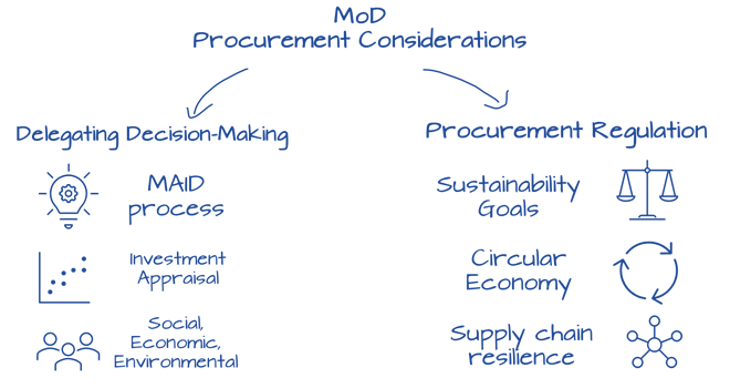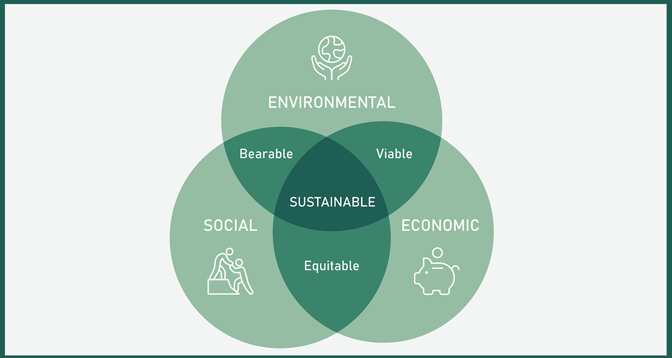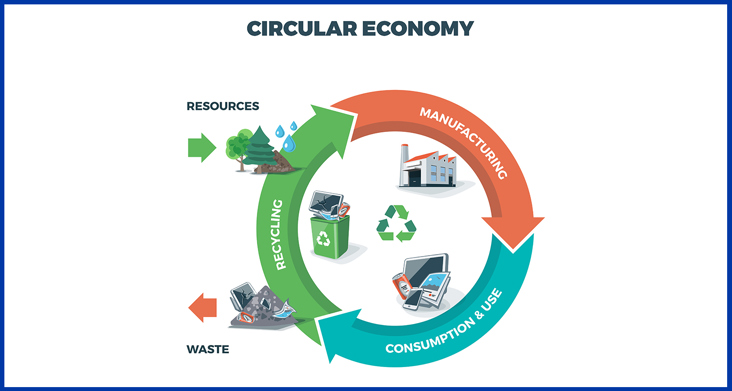This latest blog in our Defence Sustainability Series carries the baton into the complex world of defence procurement. Sam White, Group Leader for Frazer-Nash's Techno-Economic Assessment (TEA) team asks: "What can the MOD do to leverage its purchasing power to achieve its net zero target?"
The MOD's sustainability strategy, Climate Change and Sustainability Strategic Approach, sets out a route to achieving its net zero ambitions. It plans to prepare early for future global instability (be that geopolitical or climate-based) whilst ensuring a full-spectrum capability (i.e. the combination of offence, defence and civil/overseas stability operations - for all domains, physical and cyber). But first, to achieve its net zero targets, it must decarbonise its own operations, and its supply chain. But how?
Firstly, it can put in place the right process and mechanisms internally, to set procurement off on the right foot, effectively delegating decision making within its own bureaucracy. It has already made good progress on this front. Secondly, it can exercise its position as an industry regulator, flexing its purchasing power to create the right incentives and conditions to stimulate change throughout the supply chain. This is a far greater challenge. Delegating decision-making in defence procurement
Delegating decision-making in defence procurement
In April 2020 the MOD mandated the use of the MAID process for all business cases. That is, the Ministry of Defence’s Approach to Investment Decisions. It was either hugely coincidental or entirely part of the plan, but this alignment with HM Treasury’s Green Book and thus the rest of central government’s decision-making process, has created the right foundation for the MOD to elicit the changes that are needed to realise its sustainability ambitions. Why? Because the Green Book centres on understanding and quantifying social value. To make an economic case for an intervention, the net social value needs to be understood.
Prior to MAID, when the MOD used its own CADMID cycle and the linked ‘gated’ decision-making process, the emphasis was on achieving a given capability for the lowest whole-life cost. Little consideration was given to social value. The adoption of the Green Book principles requires MOD decision makers to consider the impact on the three pillars of economics, society, and the environment. It’s timely. And it is a good foundation for sustainable procurement.
 The challenge, as with the adoption of any new process is making sure it is implemented effectively. The procurement platform needs to enable the right technological solutions to come forward during options appraisal. To support this, we need access to high quality data, and we need to change behaviours. Then, to ensure consistent and effective application, we need suitable training and automated advisory tools that provide robust insight into complex decision spaces.
The challenge, as with the adoption of any new process is making sure it is implemented effectively. The procurement platform needs to enable the right technological solutions to come forward during options appraisal. To support this, we need access to high quality data, and we need to change behaviours. Then, to ensure consistent and effective application, we need suitable training and automated advisory tools that provide robust insight into complex decision spaces.
Frazer-Nash is already operating in this space. Our supply chain and supportability teams developed an interactive decision support tool that was used by our MOD main building customer to identify optimal procurement and support options for a dynamic novel weapons programme.
Flexing its industry regulatory powers
It is encouraging that the MOD has already taken steps to put in place the necessary processes to enable decarbonisation through its own procurement, but for it to be truly successful, the climate lens through which acquisition will be subjected to needs to penetrate the entire value chain. And this is where the MOD can flex its purchasing muscle. The MOD is one of the biggest public procurement organisations in Europe. If it makes the right changes, the impact on the entire nation’s sustainability goals will be significant.
In short, the supply chain must be challenged to satisfy the MOD's climate expectations. No longer can contracts be let solely on the basis of a capability being met at the cheapest price. The MOD must leverage its role as an industry regulator and incentivise change. And it will achieve this though procurement controls. Contracts and frameworks will need to be re-written, re-framed and re-constituted.
As is noted in the action plan, the MOD will implement weightings that incentivise low carbon options through procurement competition. It will also develop ‘fast follower’ strategies that will explore low carbon technologies in tandem with capability sponsors.
Moreover, from September 2021, defence procurement policy will require all suppliers to commit to net zero 2050 and publish a carbon reduction plan. This is a hugely positive step toward instilling the right changes in the supply chain, but the MoD could go one step further and include progress monitoring against these plans as well as net contribution, to ensure plans are actioned, thus further stimulating supply chain reform.
Alongside this it must also consider climate resilience in the supply chain. Defence capability often needs to be supported for decades, so it is important to consider whether the supply chain is reliant on a service which is vulnerable to climate threats. We believe supply chain risks can be partially mitigated by introducing circular economy alignment measures at the procurement stage.

This will help to ensure reusable or refurbished capability is designed into solutions, reducing risk exposure and enhancing self-sufficiency in the supply chain.
All these changes will have an immediate and lasting impact on the way in which:
1) investment decisions are made
2) procurement competitions are run, and
3) frameworks are constructed.
As noted at the start of this article, there needs to be a big and impactful signal to the market — the strategy has done that. There now needs to be a commensurate effort to deliver on the promise. The procurement platform is in place, the MOD — and soon the rest of central government — will need support to maximise the benefits from sustainable procurement driven regulation reform. This will require skilled business case practitioners who understand the MAID (and Green Book) process, who can identify and quantify sustainability impacts, and who can help supply chain companies re-shape their solutions to adopt new technology, put in place carbon reduction plans, and ultimately help to develop circular economies.

